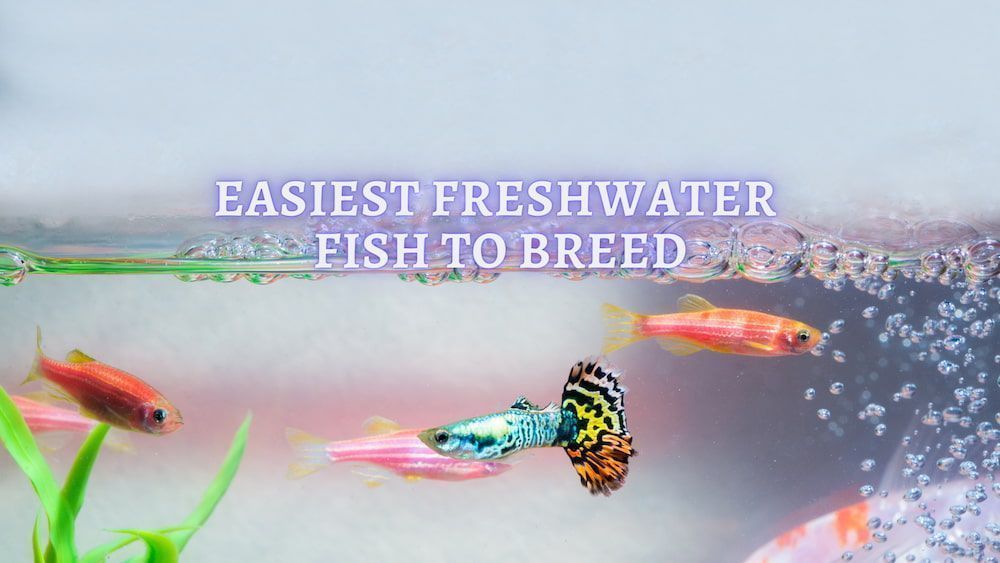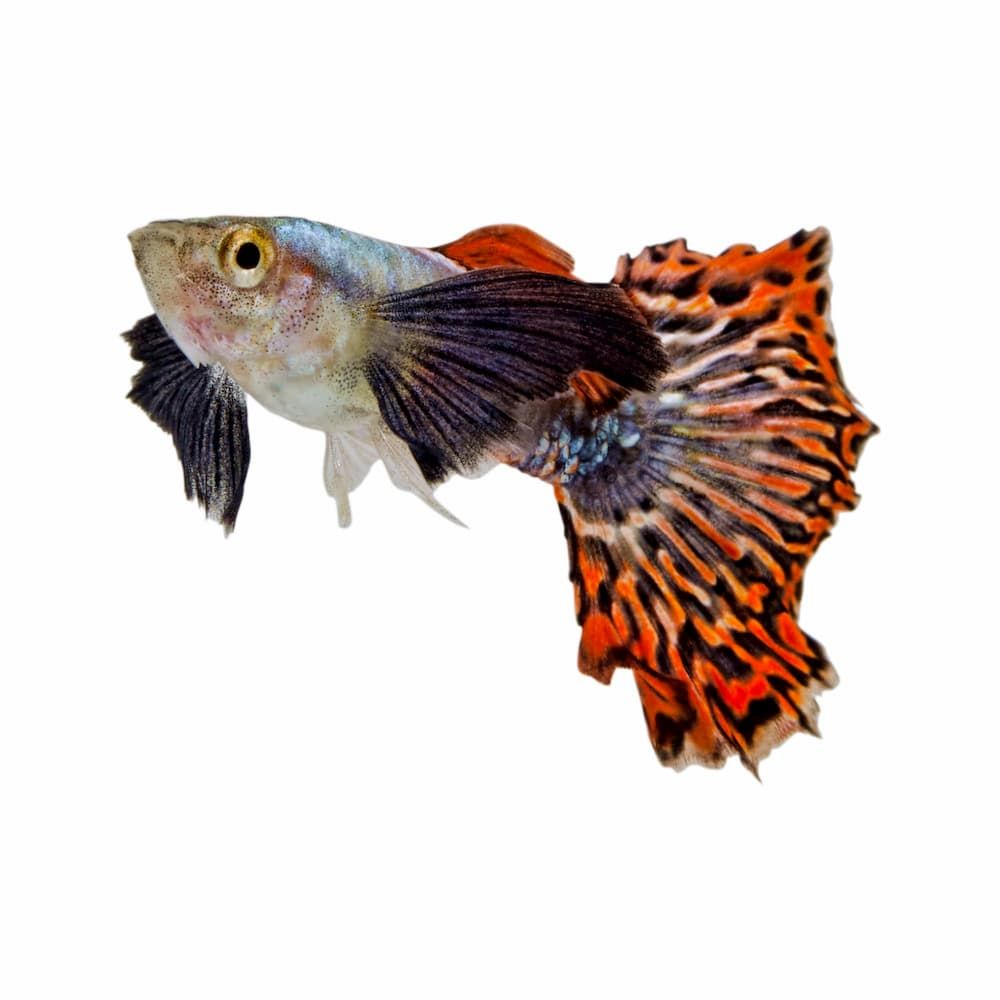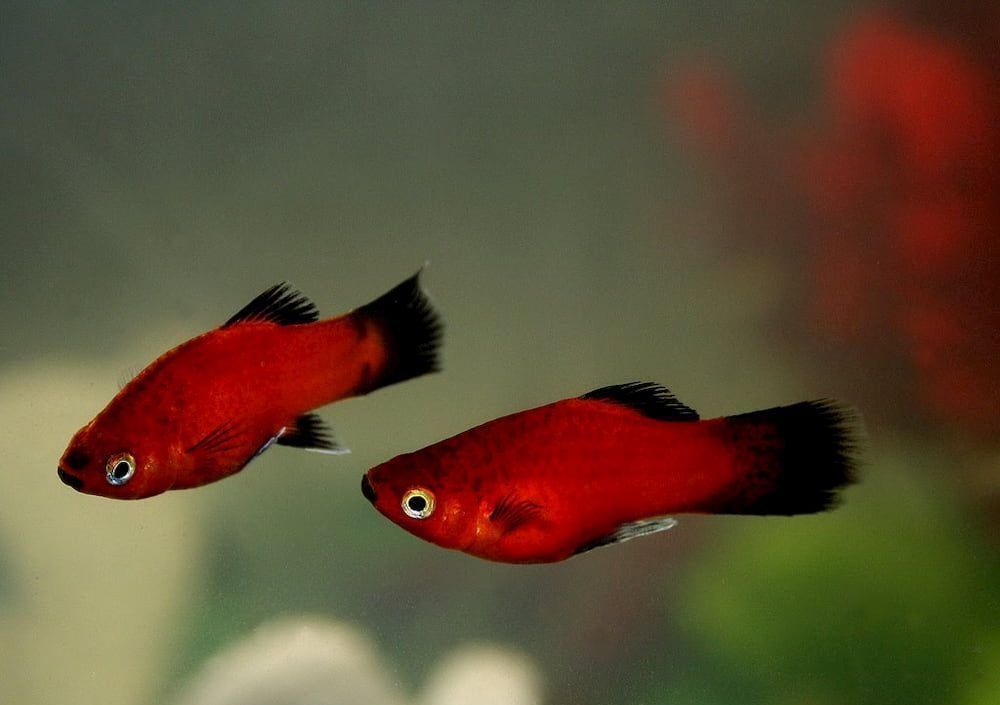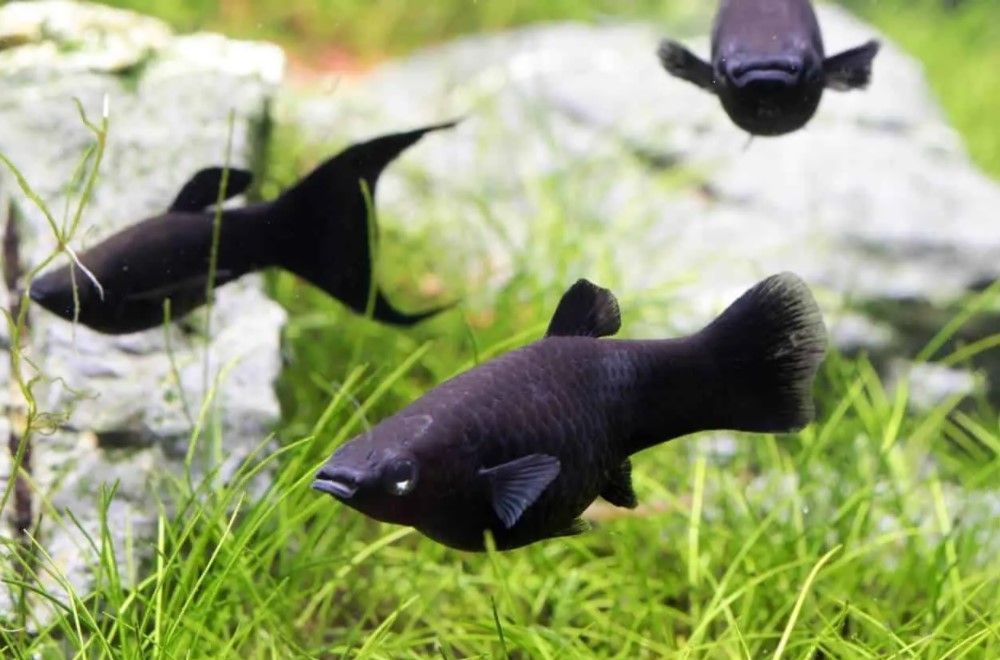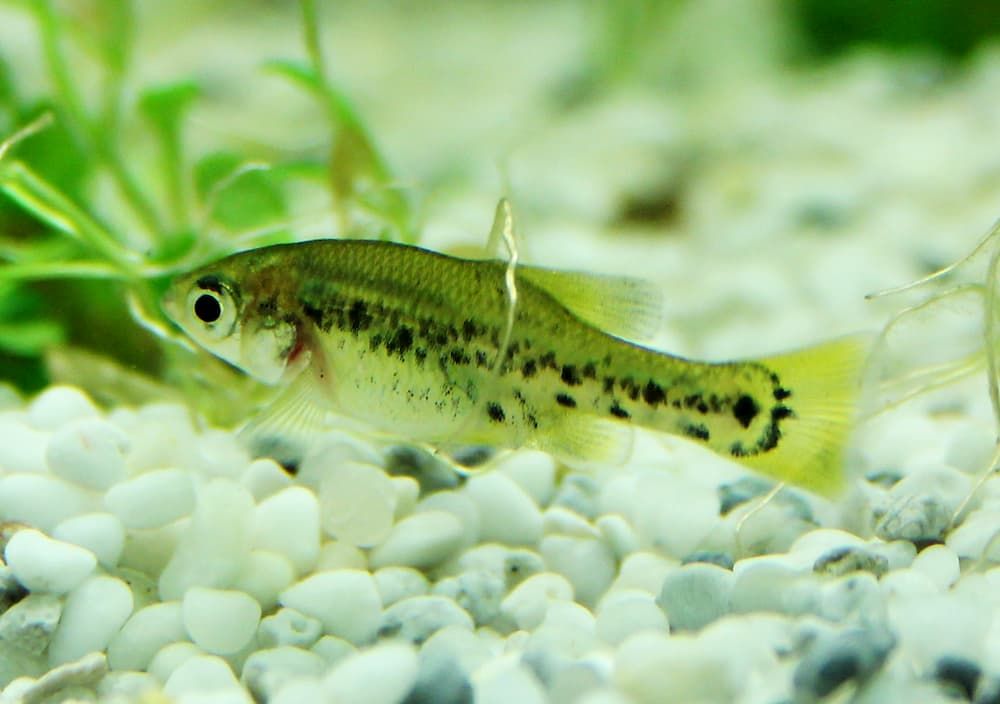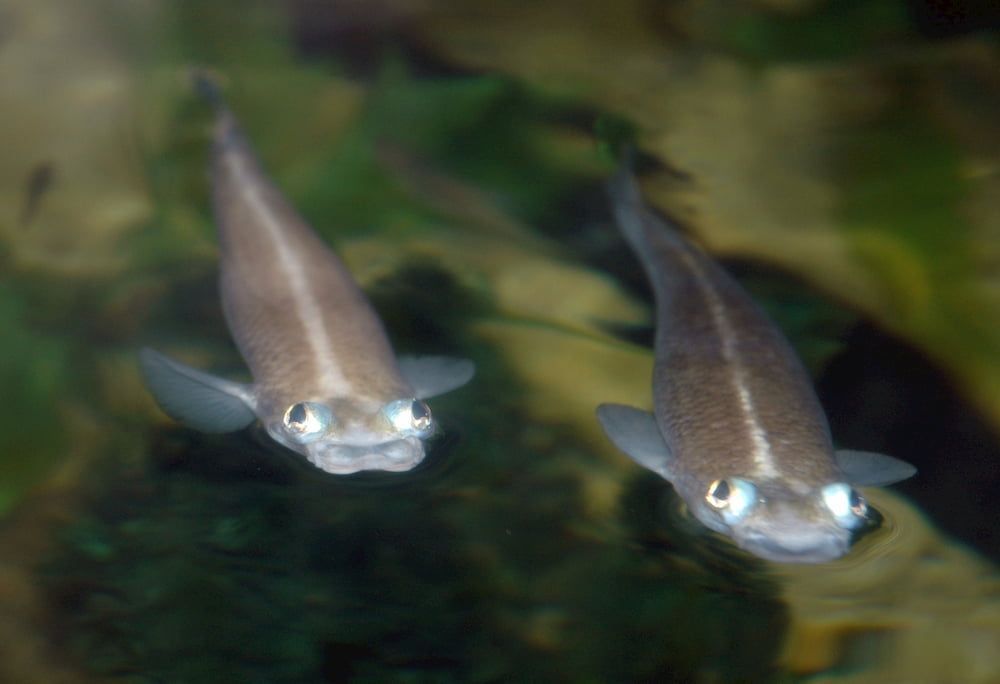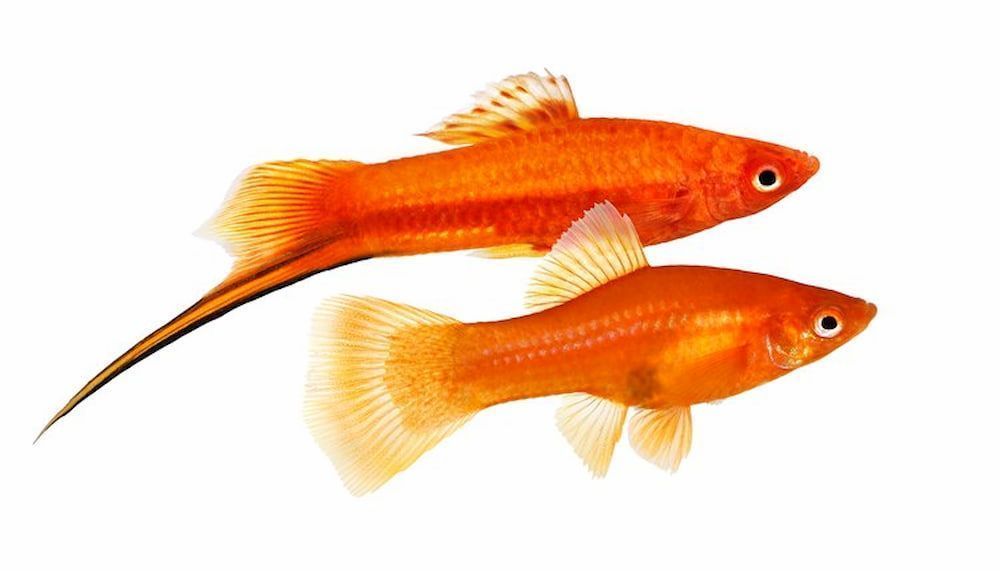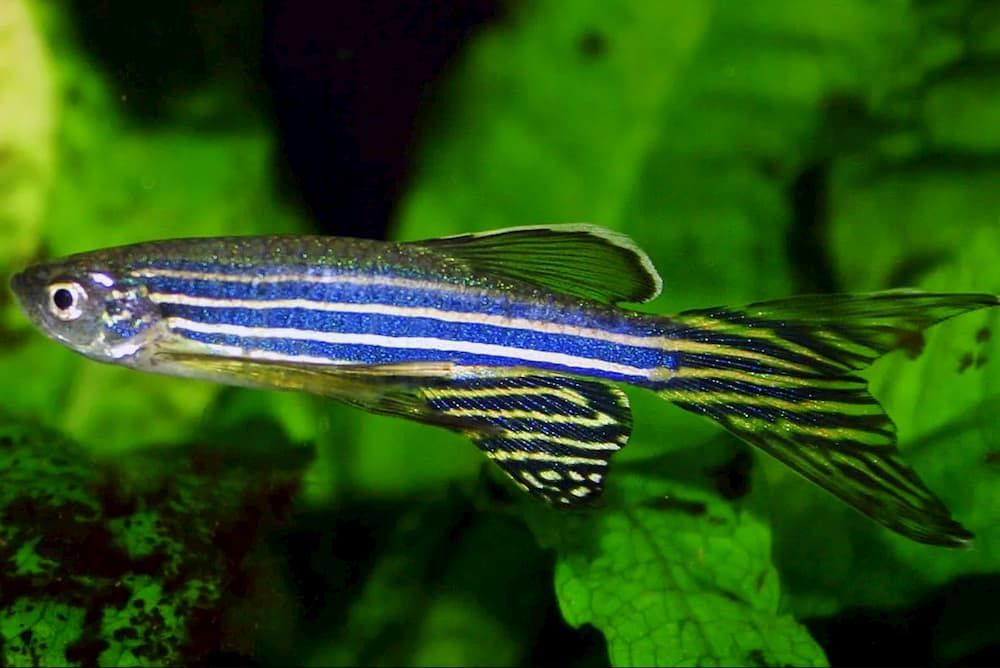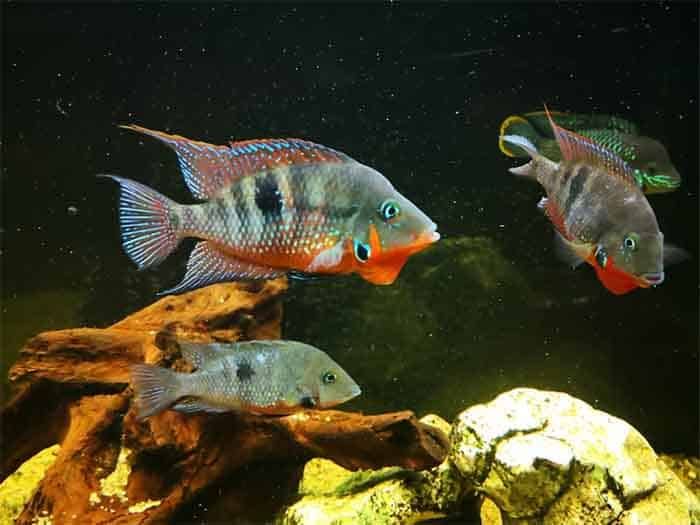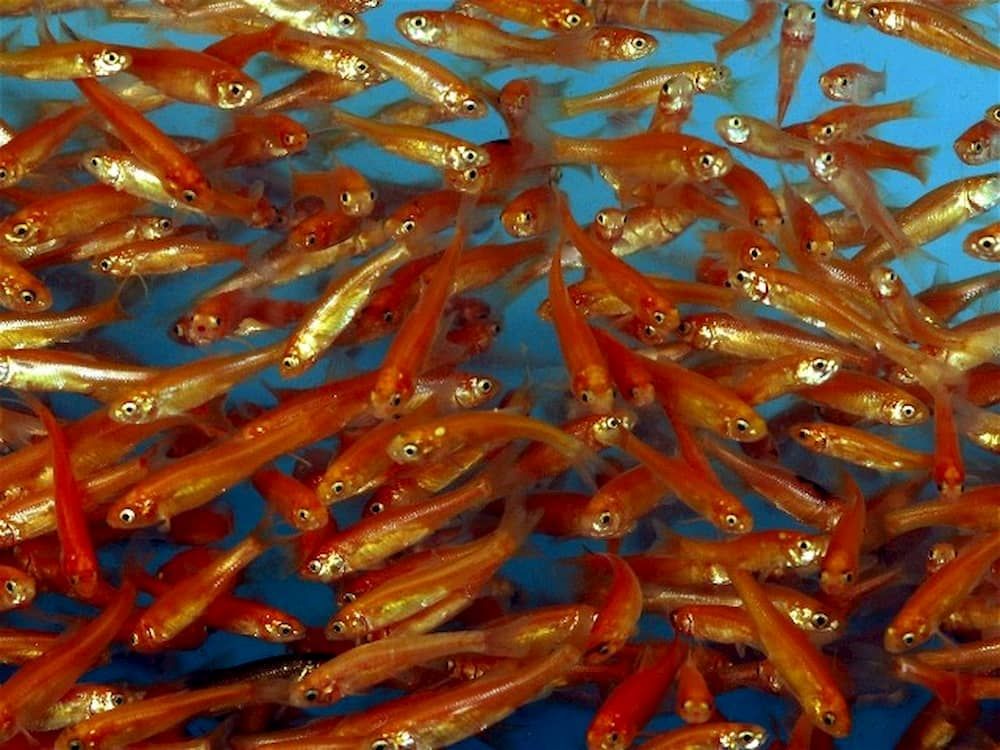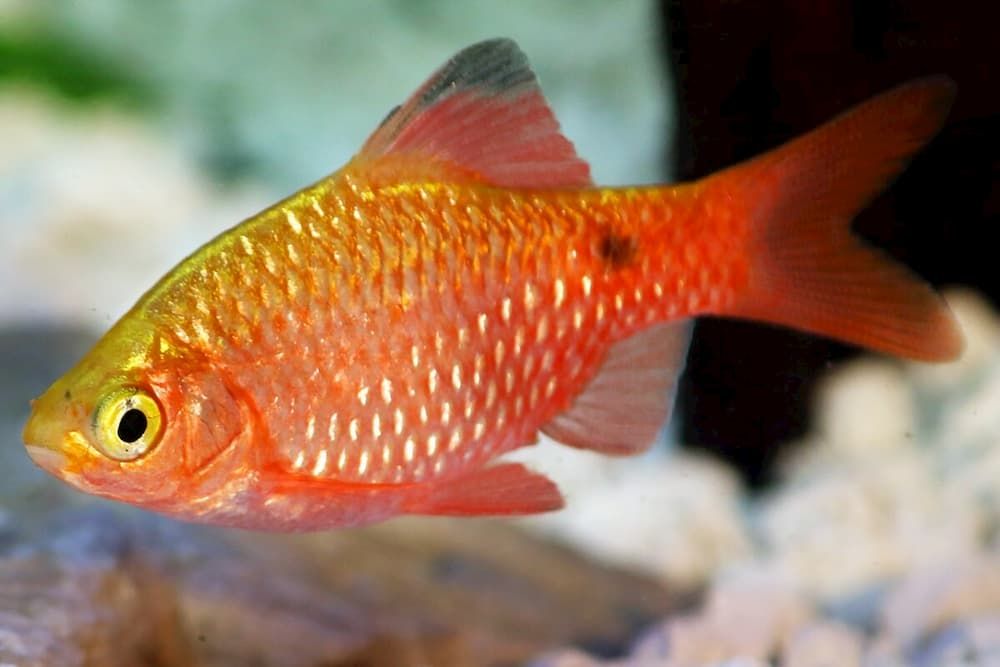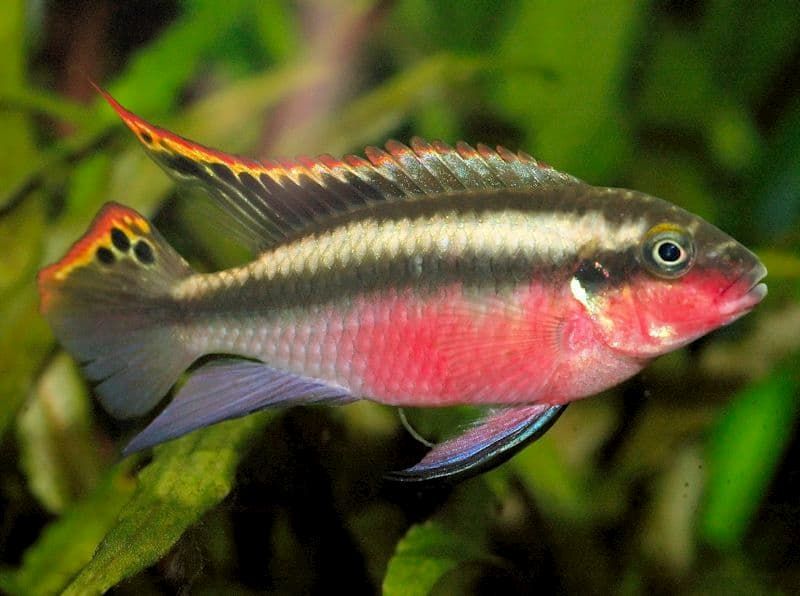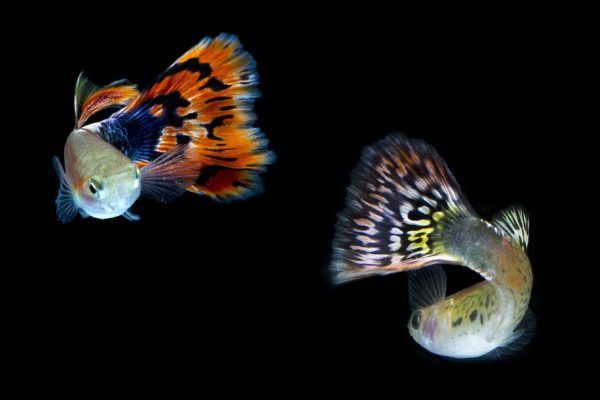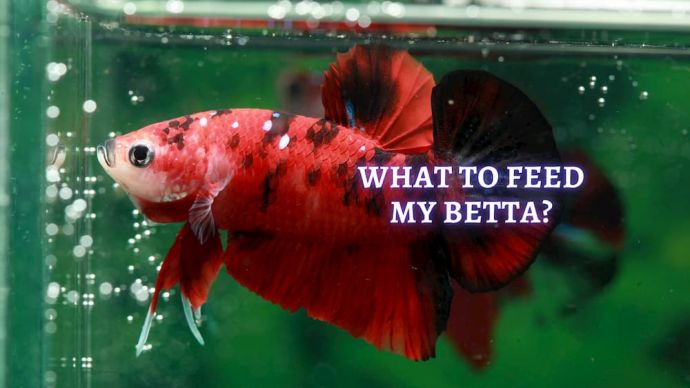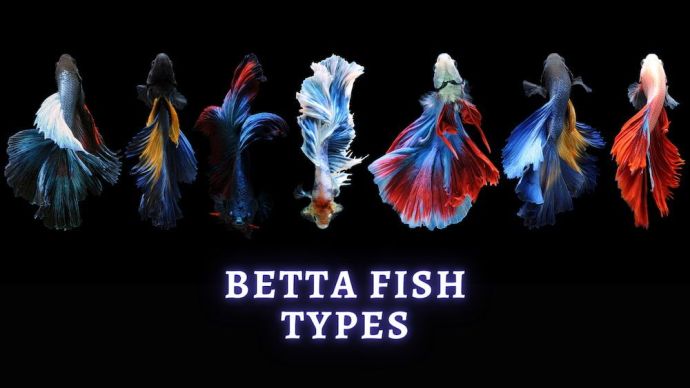The Easiest Freshwater Fish to Breed: Guide For Beginners
Written by:
Author: Alina Andreeva
Alina A. is a professional writer, editor, and pet-lover. She has published over 50 articles on how to care for pets properly. Alina has been writing articles for 3 years, so she has considerable experience in this niche. Her natural curiosity helps her to expand her knowledge and learn new pet care life hacks, which will make your life much easier.
View all 79 articlesLearn about our editorial process and veterinary review board.
Viewed: 2816
Updated on: 06/29/2023
Creating your first aquarium environment can be very exciting, and a significant part of the process is choosing which fish you want to include. However, as with anything in life, it is essential to ensure that you do not try to run before you can walk. As a beginner, it would be unwise to choose some of the most difficult-to-care-for fish on the market, not to mention unfair to the animals themselves. When it comes to breeding, this is even more prevalent, so ease yourself into the process by picking out some simple options. Once you master the general breeding process of beginner fish, you can gradually move on to more complicated, exciting, and expensive options. Fortunately, we have compiled a comprehensive guide to the easiest freshwater fish to breed for beginners!
RELATED ARTICLE: Most Exotic Freshwater Aquarium Fish
Before getting into the names and details, it is essential to understand that live-bearing fish are often far more accessible to breed than egg-laying fish. What is the difference? – We hear you ask; the clue is in the name. Live-bearing fish give birth to live fish, meaning you can see the little babies swimming around seconds after birth. On the other hand, egg-laying fish give birth to eggs, meaning you have to wait for them to hatch. No matter what type of fish breeding you prefer, you should look to keep the fry in a separate tank away from your other adult fish, as some will attempt to eat the babies. Live-bearing fish are far simpler to breed for several reasons, most importantly because the parents mate easily. However, once born, the fry fish or livebearers are easier to care for regarding food and location.
Examples of the Best Freshwater live-bearing Fish to Breed
1. Guppies
Guppies — Arguably one of the most popular and accessible tropical fish to breed. We are not exaggerating when we say that, to breed guppies, you only need a clean environment, a male fish, and a female fish. You can increase your chances by having a larger pool of female guppies than males. Male guppies stand out due to their more colorful bodies, as well as their plentiful patterns. On the other hand, female guppies usually have few markings and are often a dull grey color.
Not only is it simple to kick start the mating process, but fry guppies also stand a very high chance of surviving as they are born full-formed. The most challenging thing with this fish species is getting them to stop breeding. Female guppies can store male sperm for months after the actual mating process, making the chances of conceiving very efficient. This means the female guppy can fertilize several eggs from one mating session. Once you have a mating couple within a tank, it is best to remove them and place them in an environment of their own. This is especially true if you want to replicate specific characteristics from two fish, such as color or pattern.
2. Endlers
These fish are a particular type of guppy. This means they are equally talented and efficient at breeding as their guppy friends. If you keep the conditions at an optimum, they will waste no time getting to it. Regarding the actual breeding process, we recommend using a second tank. While endless will happily live and mate with other guppies, you should only include endless in the second tank. They are pretty rare fish, and you only want to mate an elder with an elder to ensure you get endler fry during the hatching period.
It would help if you looked to have more females than males in your breeding tank. The ideal ratio is around three females endless for every male, ensuring enough female fish to satisfy the male mating desire. Once the fry hatch, move them into their own tank straight away. Unfortunately, parents endless will feast on their babies if given a chance. When raising the endler fry, you should be looking to introduce flake food and vegetation to the new tank. Raising endler fry should be a pretty simple process, much like their guppy counterparts.
3. Platies
While platies are almost as easy to breed as guppies, there is one key difference, platies are known to hunt their own fry. You read that correctly; the parents will eat their babies. Due to this fact, the survival rate of platies fry is far below that of guppies. One way to combat this is to include dense plant life and loads of hiding spots around your aquarium to ensure the fry remains safe and out of sight. Another more efficient technique is to place the mother into a breeding tank before removing her once the fry is born. This allows them to grow without the risk of being eaten.
Platies can grow to be around two inches long and are delicate-looking fish. Their bodies often feature bright colors and dark patterns. Not only are they beautiful to look at, but they are also adamant, able to withstand various conditions. Therefore, they are good options for beginner breeders. When breeding platies, you should purchase more female fish than males. The ideal ratio is around three or four female platies for every male, ensuring enough female fish to satisfy the male mating desire. When your female platies are pregnant, you will see a noticeable change as they become plumper.
4. Mollies
These are very efficient and prolific breeders within the fish community. However, they may be considered one step above your absolute novice breeder due to their picky attitude. The conditions for breeding must be perfect, but once they are met, they reproduce for fun. In terms of fry survival, most will survive if they are kept in a tank with mollies only, as well as a steady source of food, adults that are not hungry, and dense plant life. Please do not attempt to keep the fry in a standard tank with other fish; otherwise, they will be swiftly hunted.
Mollies usually grow between three and four inches, but some are as large as six inches and above! Once again, this fish species comes in a wide range of beautiful colors with an array of striking body markings. This comes partly because many sub-species use the molly name. The trick with mollies is to ensure that you have a large enough tank to house them once they reach their full size and have the correct male-to-female ratio. The ideal ratio is around three female mollies for every male, ensuring enough female fish to satisfy the male mating desire.
5. Ameca Splendens
These are nowhere near as popular as they once were among the aquarium community; however, that still needs to change the fact that they are great breeders. They are also exciting to watch during the birthing process, as they can be likened more to humans than some other fish. The mother gives birth to fry almost half her own size, and once the babies emerge, an umbilical cord-like extension, called the trophotaenia, can be seen. So, if you are looking for a unique and exciting fish to breed, look no further than the ameca splendid. Like female guppies, female ameca splendens can store male sperm for months after the actual mating process, making the chances of conceiving very efficient. This means the female guppy can fertilize several batches of eggs from one mating session.
6. Anableps
Also often referred to as four-eyed fish, anableps are excellent breeders due to their unique sight method. Anableps only have two eyes, but each is split into two sections, allowing them to look above and below the surface as they swim along the top of the water. These are perfect for those looking for larger fish, as the species can grow up to one foot in length. Just be sure you have enough room to breed these fish, as it can become overwhelming once you have a whole load of them.
However, the anableps also possess a rather unique method of mating known as one-sided breeding. The sexual organs are on one side of the body, meaning a left-sided male can only reproduce with a right-sided female. Therefore, you must ensure that you have a good mixture of males and females in the tank and that it is suitable and left-sided. You should also know that anableps can become aggressive when they feel threatened or ready to give birth. Once the baby fish are born, they are usually pretty tough from the early days, meaning they can stomach most food sources.
7. Swordtails
Known for their dark pointed rears, the swordtail is another prolific live-bearing breeder. It would help if you aimed for a male-to-female ratio of 3:1 with this species to reduce stress and anger. Much like many of the above, they need a spacious and clean tank to kickstart the breeding process. When it comes to the fry, you can keep them in the same tank as their parents as long as there is plenty of dense plants and moss to serve as hiding spots and food.
Fortunately, swordtails are relatively easy to look after. In fact, they require very little time or effort when it comes to breeding. As long as they are kept in the right conditions, they will happily breed away. You need not intervene as these are active breeding fish. However, once again, swordtails tend to eat their own fry once they have hatched, so you will want to remove the parents from the tank before that happens. The tank should also include plenty of vegetation where the fry can hide after birth. In short, swordtails are a pleasure and an easy option to breed, so they are an excellent option for beginners.
READ MORE: Best Fish Combinations for Freshwater Aquarium
Examples of the best freshwater egg-laying fish to breed
Egg-laying fish are more complicated to care for than live-bearing fish, and we recommend the latter. However, if you want to take the next step or have your heart set on an egg layer, here are some great breeders to go for.
8. Zebra Danios
The fun fish are perfect for breeding and being an energetic presence around your tank. It would help if you looked to place the fish in their own tank for the mating process, keeping them there throughout the birthing too. Try to aim for two males for every female. As soon as the eggs have been laid, remove the adults from the tank, leaving just the eggs and eventual fry. This fry will be born transparent, so keep as close an eye on them as possible and start feeding them once they swim around the tank.
Zebra Danios fish are perfect for those who are more limited in terms of space as they only grow to be around two inches in length. They are also a pleasure to care for as they are little bundles of energy around the tank. These fish get their name from the eye-catching zebra-like markings across their body, making them a welcome addition to your aquarium. The Zebra Danios are great options for beginner breeders as they procreate efficiently and often without drama, as long as you follow the key rules outlined above. The fry are also among some of the cutest around!
9. Firemouth Cichlids
Once again, these are perfect fish for those who are looking for something a little bigger, as they can grow up to six inches. You should look to keep a pair of breeding Firemouths in a 50-gallon tank, keeping the water clean. You can also choose to buy six to eight juveniles together and keep them in one tank as they will likely couple up over time. Unlike some species, the Firemouths are very good parents and will watch over the fry rather than trying to eat them. In fact, the fry often stay at their mother and father’s side until they are more than three weeks old.
The firemouth cichlids get their name from the bright red mark that can be seen around their mouth area. These fish can live for years on end if you keep them healthy, just make sure that you have a big enough tank to comfortably house them all. When it comes to breeding, the firemouths like their water as clean as possible, so take special care with that. Once conditions are deemed ideal by the fish, they will waste no time getting the mating process started, so you shouldn’t have any issues with that.
READ MORE: Best Freshwater Aquarium Plants
10. Rosy Red Minnows
This species is also known as the Fathead Minnow, the Tuffy, and the Blackhead Minnow. They grow to be 2 — 4 inches (10.16 cm) in length and, although they are used as bait or feeder fish by some, many also enjoy keeping them as pets. Let’s just say that the male and female Rosy Red Minnows rarely need to be asked twice when it comes to mating/breeding. You should be looking to invest in Minnows that are around one year in age in order to breed successfully and safely.
You should also be aware that a mother can hatch hundreds of eggs and will only look after them until they have hatched. The mother will often lay the eggs on some kind of surface such as a rock or log, so be sure to add one of those into your tank if you do not have one. Once the fry are swimming around, remove the parents to avoid them feeding on their young. Rosy red minnows are known as friendly fish who make good tank-mates for other species, as long as they are also non-aggressive. You can often tell the difference between a male and female due to their size, with the males being a bit bigger.
11. Rosy Barbs
These fish are some of the most attractive around! Their light colors contrast beautifully against their iconic dark spots. Thankfully, not only are these fish easy on the eye, but they are also pretty easy to breed. As long as the water within the tank is especially clean and the rosy barbs are kept on a diet of food that is rich in nutrients, they should waste no time in getting the mating process started.
You should look to separate a breeding pair from the rest of the tank once they begin to mate. However, be sure to put the breeding pair in a tank with plenty of hiding spots. As soon as the female rosy barb lays the eggs, take the parents and put them back into the original tank. Unfortunately, this is another species that can be guilty of eating their own babies, so best not leave them in there. Fortunately, you will have a couple of days to remove them before the eggs hatch in your second tank. Be sure to let the fry grow up a bit before adding them to the main tank, otherwise, they will become more of a food source than anything else.
READ MORE: How to Set Up Freshwater Aquarium
12. Kribensis Cichlids
If you are looking for a more exotic-looking fish, then the kribensis cichlid is the perfect choice for you with its rainbow scales. However, these fish are also stronger than their appearance may indicate, able to withstand a wide variety of conditions. You can tell the difference between a male and a female by their shape and size. The male kribensis cichlids are long and thin while the females are short and thick. Each fish usually grows up to around three or four inches.
When breeding, you can separate these fish into pairs from the off, unlike most other fish. Just don’t expect the male and female to mate straight away as soon as you pair them up. Be patient and give them time. They could take a few days to go through the process. Raising the temperature of the tank to around 80 degrees Fahrenheit (26.67 °C) can improve the chances of breeding. The stomach of the female will turn a shade of red when she is ready to begin mating. Once the fries hatch, these fish can also remain as a couple in the tank and co-parent their babies. Do not be alarmed if they appear to eat their young, they are merely transporting them in their mouths.
How to Care for your Breeding Fish
Now that you know which fish to invest in, it’s important that you learn exactly how to care for your breeding fish. After all, if you do not care for them properly, they will be unable to breed efficiently and the resulting fries may not be healthy.
Hiding spots
Most fish love a hiding spot in general. This is important for their general health and happiness. However, hiding spots are even more pivotal in the breeding process, as hiding is part of the courting stage. Females often prefer to lay their eggs in hidden areas, while some fry also like to hide once they are hatched. The best options are rocks, driftwood, clay pots, etc.
Space
This can be a valuable thing in the breeding process. You must be aware of which fish like space and which do not require it. Some prefer to be separated into pairs from the start, while others prefer to be kept in a group. Some can be left with their young after hatching, while others will eat them. Research is key!
Healthy fish
In order to breed healthy fish, you must start with healthy fish! When purchasing your initial breeding fish, ensure that they are healthy. That means no damaged fins, no dullness in coloring, no strange movements, no floating around without swimming, no lack of appetite or energy.
Feeding
Feeding and breeding go hand in hand. Ensure that you give them a diet full of nutrients, including lots of protein and vegetables. Newly-hatched fry will need very small food. Ensure that group tanks are kept well-fed to remove the risk of larger fish eating the fry.
Plan
Have a breeding plan before you start. What is your method? What will you do with the fry? How will you trigger the mating process?
Filters
Small eggs and fry can get sucked into your filter, so be careful!
Ask questions
Wherever you purchase the fish from, ask them if there are any specific instructions that you should be aware of.
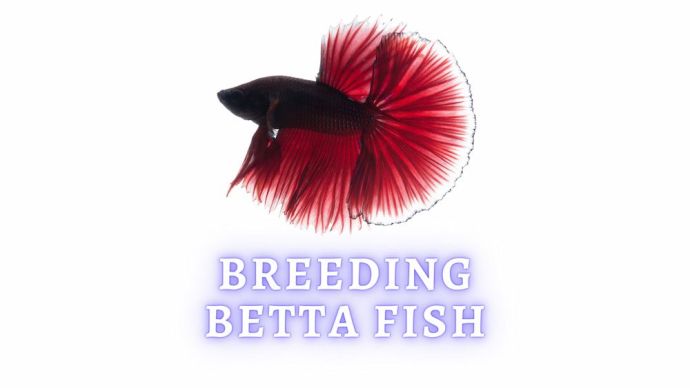 Freshwater Fish Breeding Betta Fish: All About Proper Equipment, Conditions and Timing
Freshwater Fish Breeding Betta Fish: All About Proper Equipment, Conditions and Timing - 49
- 0









